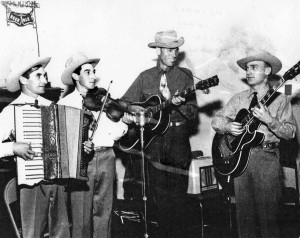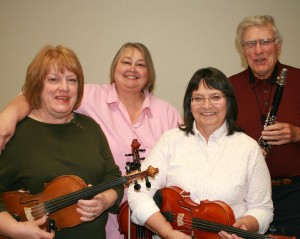By Ed Quillen
One of the obscure pleasures of life in a little mountain town is the occasional dose of isolation. It snows all day with strong wind. The roads are closed, the phone and power lines go down. You have no idea what’s going on in the rest of the world, and you don’t really care because you couldn’t get there anyway. You’re just playing cribbage at home by lantern light while a wood fire cheers and warms.
But even though that sounds somewhat relaxing, I suppose it would get old after a couple of days. We’re creatures who seem to need both isolation and connection, and those two states compete with each other – and usually we don’t have anything to say about which side is winning.
Recently, we’ve been on the disconnection path. Until the end of September, I stepped out my front door every morning and picked up The Mountain Mail, Salida’s small daily printed five blocks away, and the Denver Post, the big statewide newspaper printed 150 miles away.
However, except on Sundays, the Post is no longer a statewide newspaper. Several years ago it cut off weekday delivery to the Western Slope, and now it was our turn to get cut off. I guess there just weren’t enough subscribers in Salida to pay for someone to make daily home deliveries; the weekday Post is still available on some news racks, as I’ve seen it on the inside rack at Safeway.
The New York Times, USA Today, and The Wall Street Journal were all distributed by the same folks who did home delivery of the Post. Granted, I’ve written for the Post for years, so I have some bias here, but I miss it, everything from the front page to the comics and puzzles.
Newspapers have long been a habit of mine, and it just doesn’t seem right to start the day without a big newspaper. Not that there’s anything wrong with The Mail, but it’s just too small to sate my habit.
I suppose one can get over habits – after 44 years of smoking, I haven’t started a day with a home-rolled cigarette since March 19 – but newspaper reading always seemed like a good habit. The eighth-grade civics teacher encouraged it and we had to bring in clippings every Friday for “Current Events.”
With the cutbacks in home-delivery circulation of metropolitan newspapers, we’re more isolated than we were a few months ago. And true, it did seem a bit strange for little old Salida, pretty much in the middle of nowhere, to have on sale that day’s New York Times.
Another sign of creeping disconnectedness: Mike Rosso, the owner of this fine magazine, tells me that he used to be able to pick up a PBS TV station through his rabbit-ears antenna, but now he can’t.
And of course, even though Salida was founded as a railroad town, the train hasn’t come through here since about 1997, and it was 30 years before that when passenger service was terminated. The tracks remain in place and there’s some value in the real estate, for the Union Pacific Railroad wants Salida to pay $2 million for some land across the river that would improve local parking and trail access.
There was even a time when Salida had scheduled air service, an outfit called Shavano Airway, which, in the late 1970s made two loops a day through Salida, Leadville and Denver. You could actually check your bags at Harriet Alexander Field. The airline went under about the same time Climax Molybdenum shut down in 1981.
For more of the isolation trend, several small post offices in this neck of the woods are proposed for closure, and there’s also talk of moving Salida’s mail-sorting to Denver, thereby making local service worse – another phase of disconnection.
So every day we’re getting more isolated. Except we aren’t. A decade ago, after Continental Trailways cut back on bus service, there wasn’t any public transportation in or out of Salida. Now there’s the Chaffee Shuttle, with service to Denver and connections with Gunnison and Alamosa.
As for communications, I can remember when Buena Vista was a long-distance call from Salida. Now the toll-free calling zone extends from Leadville to Saguache, from Monarch to Cotopaxi. And with a lot of land-line phone plans, that doesn’t matter much anyway because you get free long-distance for domestic calls. And cell phones, as nearly as I can tell, don’t care about long-distance.
I can also remember when KVRH was the only radio station you could consistently get in Salida or Buena Vista, AM or FM (they carried the same signal, and there was none of this modern branding folderol about “the Peak” or “the Hippie”). Sometimes you could get KOA out of Denver, but not always. Now there must be close to a dozen FM stations.
If you spring for cable or satellite TV instead of relying on the local repeater, there are scores of TV signals available, along with music channels.
And the big connector of the 21st century, the Internet, is available in broadband high-speed form from at least two providers, Century Link (nee Qwest) and Optimum (nee Bresnan), and you don’t even need to own a computer if you can get to the library.
So we’re reasonably connected to the rest of the world. It’s just that our means of connection keep changing – i.e., when was the last time you sent or received a telegram? Western Union, based in Colorado, is still very much in business with money transfers, but its last regular telegram was delivered on Jan. 27, 2006.
For that matter, when was the last time you got or sent a personal letter through the U.S. mail? I still write paper letters from time to time and cherish receiving them, but about 99 percent of my correspondence is via e-mail. And that’s passé on account of Facebook and Twitter and texting, none of which do I have a clue how to use. And I figure that any time I put into learning to use them would be wasted, because by the time I got it figured out, connected society would have moved on to the next cool thing.
And I can’t remember the last time I sent a fax or had someone want to send me one – and faxing was all the rage a mere 20 years ago. When we were cleaning up after selling this magazine, I junked two fax machines – I couldn’t even give them away in 2009.
So the question of “connectedness vs. isolation” is really a question of economics and technology once you get past the face-to-face meetings. The economics change – telegrams used to be cheaper than long-distance calls – and so does the technology – it’s a lot easier to find a computer than a telegraph sounder these days.
What all this means, I suppose, is that degrees of isolation come and go. You can’t get a Denver newspaper delivered to your door any more, but you can check today’s headlines in Johannesburg on the other side of the world. I suppose I can get used to this, but it’s going to take a while.
Ed Quillen, who helped found this magazine in 1994, alternates between embracing and resisting new technology, depending.



With Ed’s passing I feel even more isolation. He was a good friend and mentor since college and will be sorely missed as a ‘voice crying in the wilderness.’